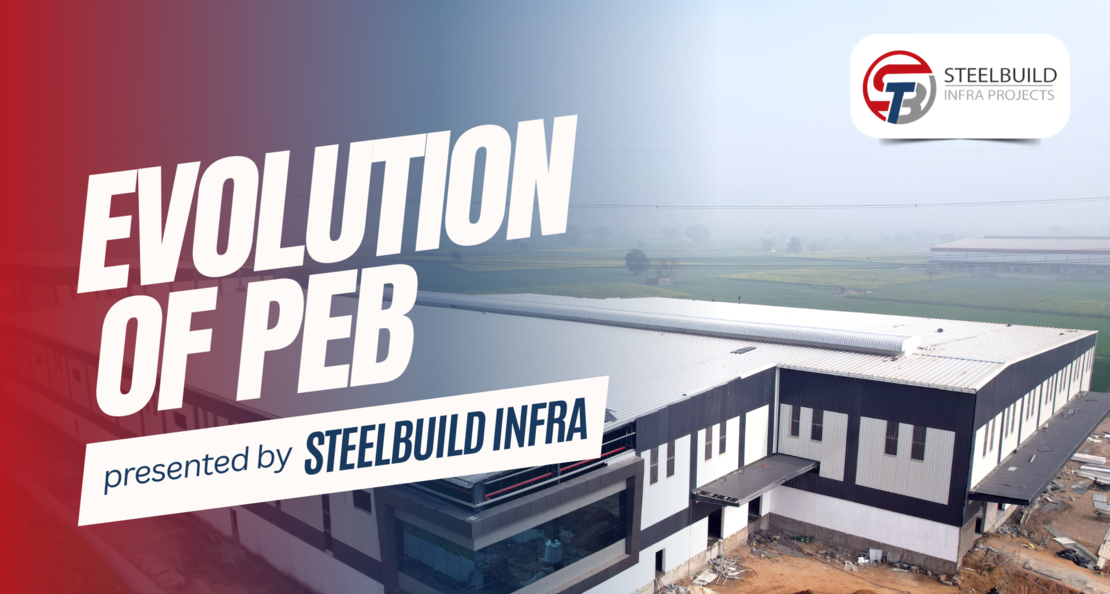The Evolution of Pre-Engineered Buildings: Benefits and Key Features
Pre-Engineered Buildings (PEBs) have emerged as a transformative solution in modern construction, offering a blend of speed, cost-efficiency, and sustainability. As a hallmark of innovation, PEBs have drastically altered the traditional building process by introducing prefabricated components and modular designs. This article delves into the evolution, benefits, and key features of PEBs, showcasing their profound impact on the construction industry.
The Evolution of Pre-Engineered Buildings
The Genesis of Prefabrication
The roots of pre-engineered buildings trace back centuries, with early concepts focusing on modular construction and prefabricated components. However, it wasn’t until the industrial revolution and the post-World War II era that prefabricated structures gained prominence. The demand for quick, reliable, and cost-effective building solutions spurred interest in standardizing construction components.
The Rise of Steel in Construction
Steel, as a versatile material, played a pivotal role in the evolution of PEBs. Its properties—durability, flexibility, and recyclability—made it an ideal choice for framing, roofing, and walling. Over time, advancements in steel manufacturing processes, such as the advent of high-strength steel, cemented its role in the development of PEB technology.
Technological Advancements
The introduction of CAD (Computer-Aided Design) and 3D modeling revolutionized PEB design, enabling precise customization and seamless fabrication. These technologies reduced errors, optimized resource utilization, and paved the way for more complex architectural designs.
Global Expansion
Initially, PEBs were primarily used for industrial and military applications. Over the decades, their adaptability allowed them to expand into commercial, agricultural, recreational, and residential sectors. Today, PEBs are a global phenomenon, redefining construction practices in diverse industries.

Key Features of Pre-Engineered Buildings
1. Customization and Flexibility
PEBs are designed to accommodate specific project requirements, including varying load capacities, unique layouts, and aesthetic preferences. The modular nature of PEBs ensures they can be adapted to any functional need, from warehouses to multi-story office buildings.
2. Lightweight yet Durable
PEBs use lightweight, high-strength steel, which makes transportation and assembly efficient without compromising structural integrity. This durability ensures longevity and resistance to wear and tear.
3. Quick Construction
A standout feature of PEBs is their rapid assembly. Since components are fabricated off-site in controlled environments, on-site construction time is significantly reduced. This is especially advantageous for projects with tight deadlines or in remote locations.
4. Energy Efficiency
Modern PEBs are designed with sustainability in mind. Features such as insulated panels, reflective roofing, and energy-efficient windows help reduce energy consumption, making PEBs an eco-friendly choice.
5. Cost-Effectiveness
PEBs offer substantial cost savings due to minimized material waste, reduced labor requirements, and shortened project timelines. Additionally, their predictable cost structure helps stakeholders manage budgets effectively.
6. Superior Quality Control
Fabricating components in a controlled factory setting ensures consistent quality and adherence to exacting standards. This reduces the likelihood of errors and enhances the overall safety of the structure.
7. Low Maintenance
PEBs are engineered to withstand harsh environmental conditions, including extreme weather, corrosion, and pest infestations. As a result, maintenance costs over the building’s lifecycle are remarkably low.
8. Scalability
PEBs can easily be expanded to meet growing business needs. Additional modules can be integrated into existing structures without disrupting operations, offering a scalable solution for dynamic industries.
9. Seismic and Wind Resistance
PEBs are designed to resist seismic activity and high winds, making them a reliable choice in areas prone to natural disasters.
Benefits of Pre-Engineered Buildings
1. Speed of Construction
The prefabricated nature of PEBs accelerates project timelines, enabling businesses to start operations sooner. This is particularly beneficial for industries where time equates to significant financial impact.
2. Versatility Across Industries
PEBs cater to a wide array of sectors, including industrial, commercial, agricultural, and recreational. Their adaptability ensures they can meet diverse operational and aesthetic requirements.
3. Sustainability
With a focus on green building practices, PEBs contribute to environmental conservation. The use of recyclable materials, energy-efficient designs, and reduced construction waste aligns PEBs with global sustainability goals.
4. Aesthetic Appeal
Modern PEBs are no longer limited to utilitarian designs. Architectural facades, decorative elements, and vibrant finishes enable PEBs to deliver aesthetically pleasing structures.
5. Long-Term Cost Savings
In addition to reducing upfront construction costs, PEBs offer long-term savings through their low maintenance requirements, durability, and energy efficiency.
6. Enhanced Safety
Strict quality control during fabrication ensures that PEBs meet rigorous safety standards. Their resilience to natural disasters further enhances their appeal in safety-conscious industries.
Applications of Pre-Engineered Buildings
1. Industrial Facilities
Factories, manufacturing units, and workshops benefit from PEBs’ open spans and custom layouts, facilitating efficient workflows and equipment placement.
2. Warehousing and Storage
PEBs are ideal for warehouses and storage facilities due to their high ceilings, unobstructed interiors, and customizable dimensions.
3. Commercial Complexes
From retail stores to office buildings, PEBs are increasingly used in commercial projects for their modern designs, cost-effectiveness, and adaptability.
4. Agriculture
Agricultural applications of PEBs include grain storage, livestock shelters, and greenhouses. Their ability to withstand varying climatic conditions makes them particularly suitable for rural areas.
5. Recreational and Sports Facilities
PEBs are used in the construction of gymnasiums, indoor stadiums, and swimming pool enclosures, where large open spaces are a priority.
6. Residential Projects
PEBs are now being utilized in residential projects, offering unique architectural designs and sustainable living solutions.
Future Prospects of Pre-Engineered Buildings
As technology continues to advance, the future of PEBs looks promising. Innovations in materials, such as high-performance steel and advanced composites, are likely to enhance the structural capabilities of PEBs. Furthermore, the integration of smart building technologies, including IoT and AI, will enable PEBs to offer improved functionality, energy efficiency, and operational control.
Governments worldwide are also encouraging sustainable construction practices, which will further drive the adoption of PEBs. Their ability to meet stringent environmental standards positions them as a cornerstone of future construction trends.
Steelbuild Infra Projects Pvt Ltd: Leading the PEB Revolution
Steelbuild Infra Projects Pvt Ltd has been a pioneer in the pre-engineered building sector, setting new benchmarks in quality, innovation, and customer satisfaction. With a proven track record of delivering tailor-made PEB solutions, Steelbuild Infra Projects caters to industries across the spectrum. From industrial complexes to commercial spaces, the company’s commitment to excellence is evident in every project it undertakes.
By combining cutting-edge technology with a customer-centric approach, Steelbuild Infra Projects Pvt Ltd is redefining construction standards. Their emphasis on sustainability, energy efficiency, and precision engineering positions them as a leader in the PEB industry.
Conclusion
The evolution of pre-engineered buildings has redefined the construction landscape, offering unparalleled benefits in speed, cost, and sustainability. From their early beginnings as industrial structures to their modern-day applications across diverse sectors, PEBs have proven their worth as a versatile and reliable building solution.
Steelbuild Infra Projects Pvt Ltd exemplifies the potential of PEBs, delivering innovative and customized solutions that meet the dynamic needs of clients. With their ability to transform construction practices, PEBs are not just a solution for today—they are a blueprint for the future. Whether you are planning a small-scale project or a large industrial complex, pre-engineered buildings offer a smart, sustainable, and efficient path forward.
Our Similar Posts:
Click Here 👉 Pre Engineered Buildings Introductions and Features
Click Here 👉 Pre Engineered Buildings Introductions and Features Steelbuild Roofing Sheets
Click Here 👉 Steelbuild Cladding Sheets: Transforming Modern Architecture with Strength and Style
Click Here 👉 Standing Seam Roofing Sheets: Revolutionizing Modern Architecture with Durability & Style
Click Here 👉 Steelbuild Deck Sheets: The Ultimate Solution for Durable and Efficient Flooring Systems
Click Here 👉 Enhancing Building Performance: A Comprehensive Guide to Sheeting Accessories by Steelbuild
Click Here 👉 Role of Insulation in Modern Infrastructure: A Comprehensive Guide
Click Here 👉 Enhancing Pre-Engineered Building Construction: A Comprehensive Guide to Accessories
Click Here 👉 Industrial Coating: Building the Dream Project with Care
Click Here 👉 Unleashing Excellence in Construction: Steelbuild’s Project Management Consultancy
Click Here 👉 Revolutionizing Construction with Steelbuild Infra’s Advanced Plant Facility
View This Post in LinkedIn Click Here

